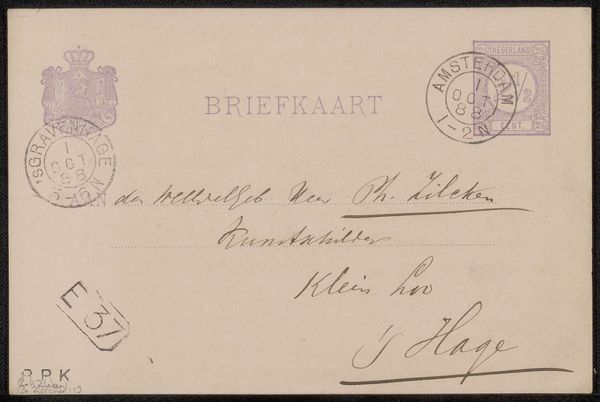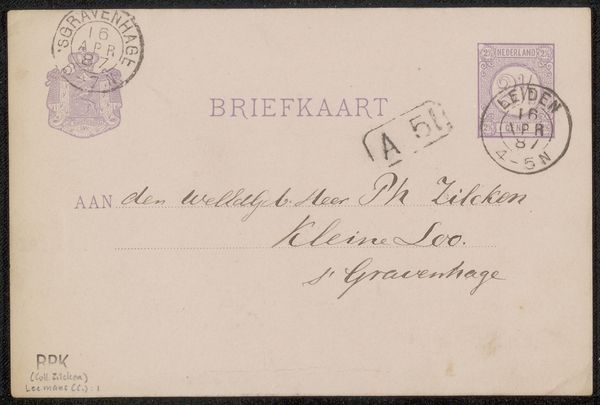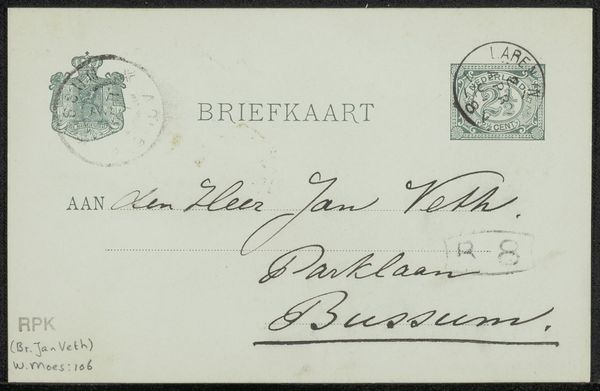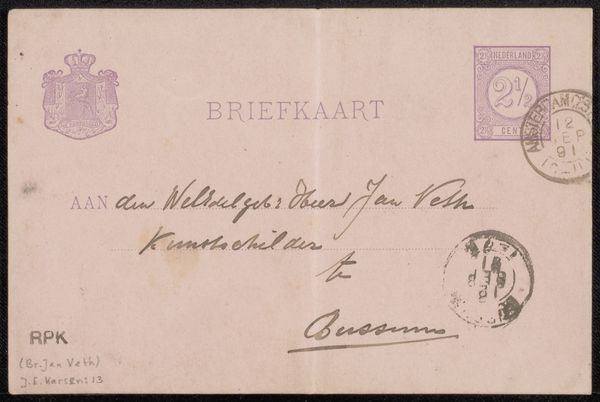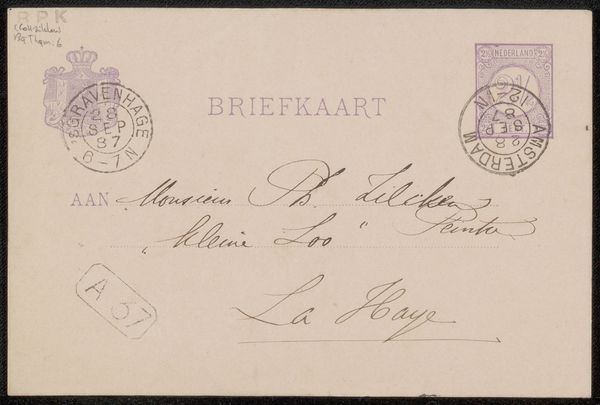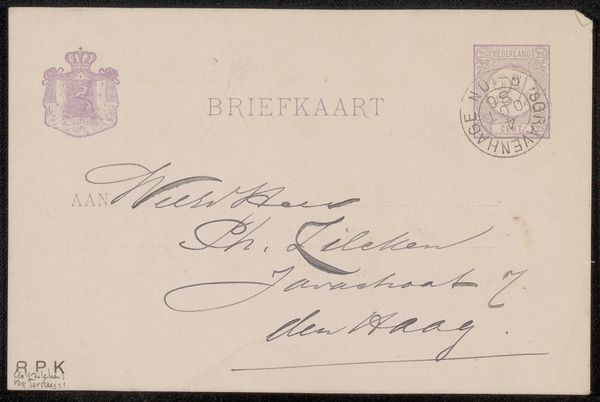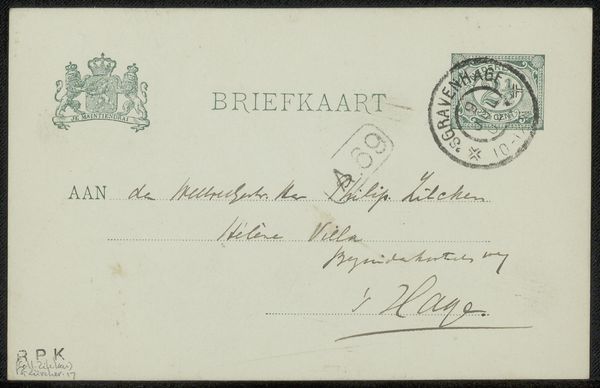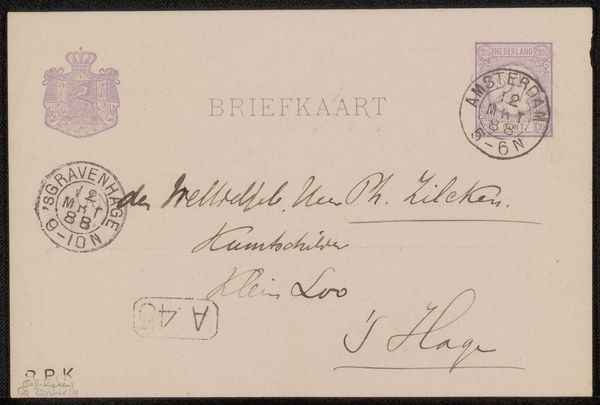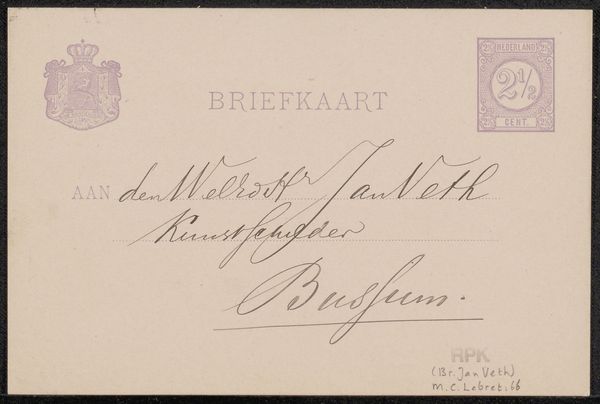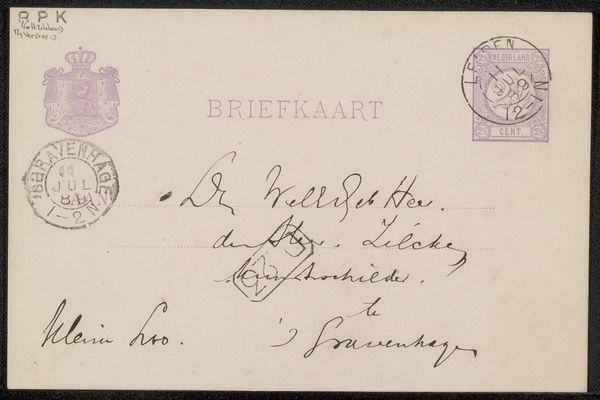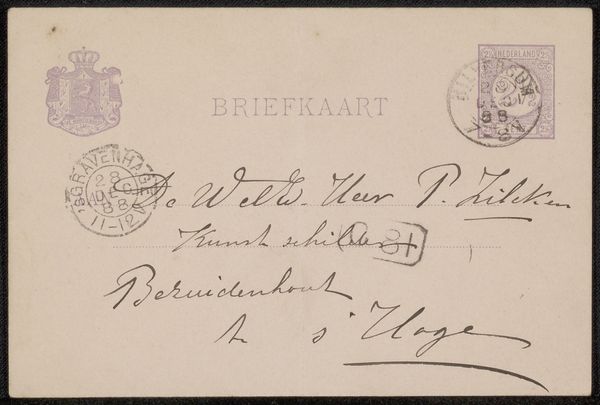
drawing, print, paper, ink
drawing
paper
ink
Copyright: Rijks Museum: Open Domain
Curator: This object, titled "Briefkaart aan Philip Zilcken," is a pre-1889 drawing in ink on paper by Elbert Jan van Wisselingh. Its humble scale belies its intriguing story. What is your initial read? Editor: It has a kind of formal, fragile grace. The various scripted fonts layer to build a lovely balanced composition—there's the block capitals of the “BRIEFKAART” stamp contrasted with the elegant, flourished penmanship of the address and signature. Curator: Indeed, the layering reveals different strata of social practice, doesn’t it? "Briefkaart" suggests the rise of mass communication and the postal service while "WelEd.Geb. Heer," short for "well-esteemed gentleman," indicates rigid class decorum, all captured in ink. Editor: You read the work through social codes, which certainly apply. But, as pure form, observe the careful mirroring effects. Note the position of the seal and stamp mirrored diagonally; or the handwriting mirroring the baseline in its curved form. Curator: You are speaking of structural symmetry and echoes. Intriguing when considering the political and cultural power enacted within it. Postcards enabled connection but also bureaucratic surveillance—control made aesthetic, perhaps even "beautiful." Editor: Surely, but is that beauty always inherently suspect? The very texture of the ink and the character of the aging paper is seductive. It gives access to a vanished materiality; this aesthetic experience transcends a single reading of political motivations. Curator: That's where we might diverge. For me, the slight imperfections—the blurred stamp, the irregular signature—humanize an otherwise impersonal system of address. I can almost envision Van Wisselingh penning this, rushing perhaps, yet still attending to protocol. Editor: I can also understand protocol if only to contrast the writer’s desire to communicate effectively: it shows a human hand, however governed by a pre-set societal form. Curator: Precisely! Which reminds me to also account for its status now. Its materiality as artifact; it invites our own modern gaze to imbue a postal card with a resonance I suspect even Wisselingh himself might not have fully imagined.
Comments
No comments
Be the first to comment and join the conversation on the ultimate creative platform.
